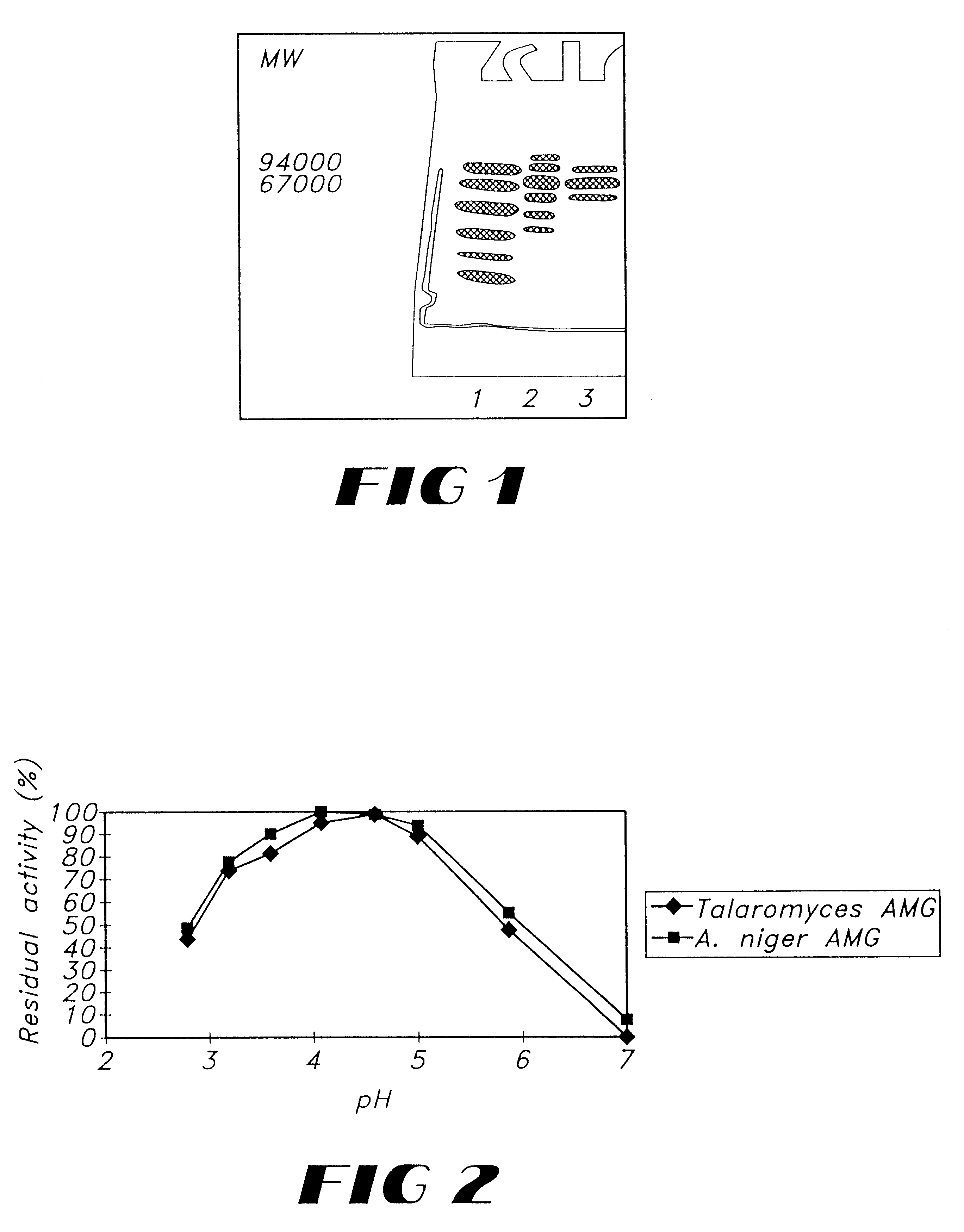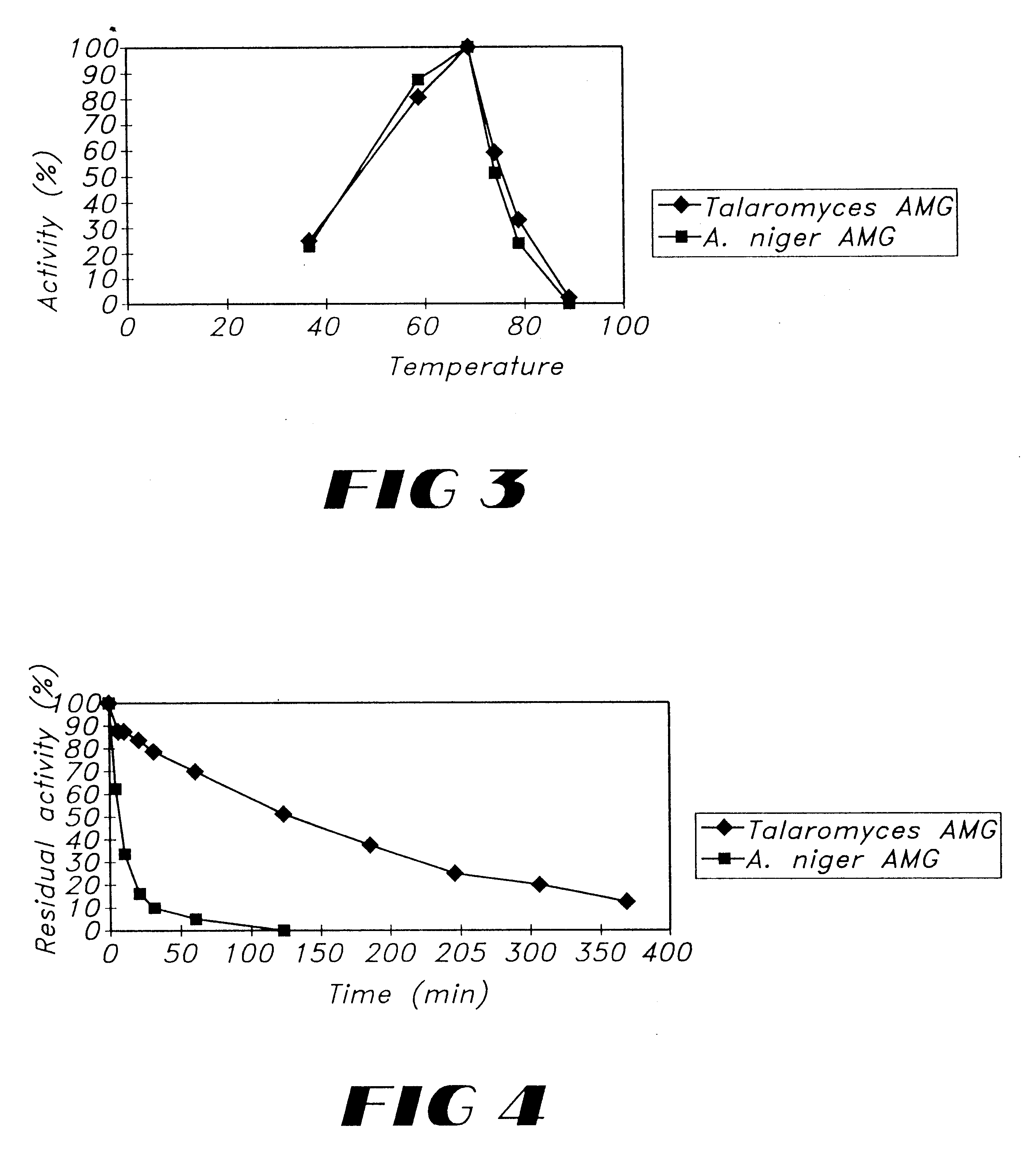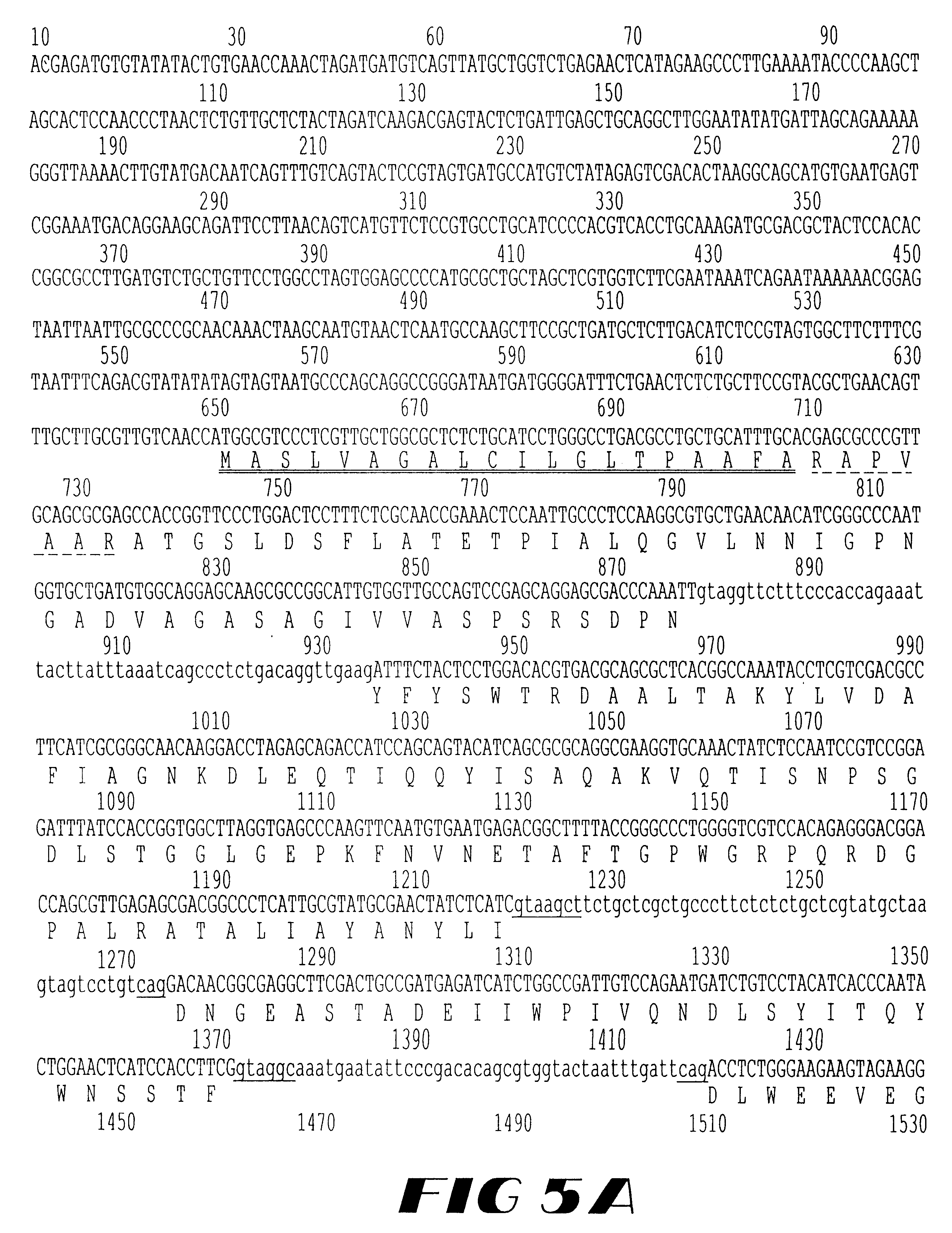Thermostable glucoamylase
a glucoamylase, thermostable technology, applied in the direction of microorganisms, enzymology, fungi based processes, etc., can solve the problems of high fructose corn and relatively low thermal stability of glucoamylases
- Summary
- Abstract
- Description
- Claims
- Application Information
AI Technical Summary
Problems solved by technology
Method used
Image
Examples
example 1
Purification
3500 ml T. emersonii culture broth from wild-type fermentation with 0.05 AGU / ml was centrifuged at 9000 rpm followed by vacuum filtration through filter paper and finally a blank filtration. The following procedure was then used to purify the enzyme:
Phenyl Sepharose (250 ml): 1,3 M AMS / 10 mM Tris / 2 mM CaCl.sub.2, pH 7; elution with 10 mM Tris / 2 mM CaCl.sub.2, pH 7.
Dialysis: 20 mM NaAc, 2 mM CaCl.sub.2, pH 5.
Q Sepharose (100 ml): 20 mM NaAc, 2 mM CaCl.sub.2, pH 5; elution with a linear gradient from 0-0.4 M NaCl over 10 column volumes.
Dialysis: 20 mM NaAc, 2 mM CaCl.sub.2, pH 5.
Colour removal: 0.5% coal in 10 minutes.
Q Sepharose (20 ml): 20 mM NaAc, 2 mM CaCl.sub.2, pH 4.5; elution with a linear gradient from 0-0.4 M NaCl over 10 column volumes.
Dialysis: 20 mM NaAc, 2 mM CaCl.sub.2, pH 5.
S Sepharose (1 ml): 5 mM citric acid, pH 2.9; elution with a linear gradient from 0-0.3 M NaCl over 10 column volume.
A purity of the enzyme of more than 90% was obtained after the S Sepha...
example 2
Characterisation of the Talaromyces emersonii Glucoamylase
The purified Talaromyces emersonii CBS 793.97 glucoamylase was used for characterisation.
Molecular Weight (M.sub.w)
The molecular weight was determined by SDS-PAGE to around 70 kDa as shown in FIG. 1.
pI
The pI was determined to lie below 3.5 by isoelectrical focusing (Amploline PAG, pH 3.5-9.5 from Pharmacia).
pH Profile
The pH-activity dependency of the Talaromyces emersonii glucoamylase was determined and compared with profile of Aspergillus niger glucoamylase.
The pH activity profile was determined using 0.5% maltose as substrate in 0.1 M sodium acetate at 60.degree. C. The pH was measured in duple samples comprising 0.1-1 AGU / ml. The result of the test is shown in FIG. 2.
Temperature Profile
The temperature-activity dependency of the Talaromyces emersonii glucoamylase of the invention was determined and compared with the profile of Aspergillus niger glucoamylase. 200 .mu.l 0.5% maltose, pH 4.3 was incubated at 37, 50, 60, 70, 75...
example 3
Sequencing of the N-terminal of T. emersonii Glucoamylase
The N-terminal amino acid sequence of T. emersonii glucoamylase was determined following SDS-PAGE and electroblotting onto a PVDF-membrane. Peptides were derived from reduced and S-carboxymethylated glucoamylase by cleaving with a lysyl-specific protease. The resulting peptides were fractionated and re-purified using RP-HPLC before subjected to N-terminal sequence determination.
N-terminal sequence (SEQ ID NO: 1):
Peptide 1 (SEQ ID NO: 2):
Peptide 2 (SEQ ID NO: 3):
Peptide 3 (SEQ ID NO: 4):
Peptide 4 (SEQ ID NO: 5):
Peptide 5 (SEQ ID NO: 6):
Xaa denoted a residue that could not be assigned.
PUM
| Property | Measurement | Unit |
|---|---|---|
| pH | aaaaa | aaaaa |
| molecular weight | aaaaa | aaaaa |
| temperature | aaaaa | aaaaa |
Abstract
Description
Claims
Application Information
 Login to View More
Login to View More - R&D
- Intellectual Property
- Life Sciences
- Materials
- Tech Scout
- Unparalleled Data Quality
- Higher Quality Content
- 60% Fewer Hallucinations
Browse by: Latest US Patents, China's latest patents, Technical Efficacy Thesaurus, Application Domain, Technology Topic, Popular Technical Reports.
© 2025 PatSnap. All rights reserved.Legal|Privacy policy|Modern Slavery Act Transparency Statement|Sitemap|About US| Contact US: help@patsnap.com



